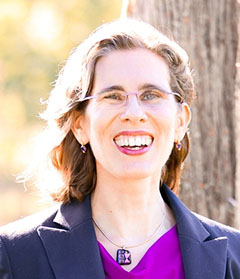 Dear WUUs,
Dear WUUs,
Last Sunday I preached on the Chauvin verdict and what’s next. Today I’d like to share an expanded version of part of that sermon. Thanks for reading!
After George Floyd’s murder in May 2020, WUU leaders felt it was urgently important for WUU to signal our support for racial justice in highly visible ways. We set up a group of Black Lives Matter signs along Ironbound Road. In worship, we organized a summer series of From the Hearts on racial justice.
In response to a request from a Black UU ministerial colleague, I also began the experiment of naming the racial/ethnic background of each writer or musician whose work we drew on in our worship services, including those who identified as White. Here’s an excerpt from the WUU News blog I published about this last August:
In the worship services I’m leading, I’ve been experimenting with naming the racial background of each author or composer whose work we use in the service. Why? Well, many people of color have pointed out that, if we only identify someone’s race when they are not White, that implies that Whiteness is the norm or the default. It’s a subtle way that systems of White supremacy can invade our consciousness. When we deliberately speak of “the White writer so-and-so,” it may sound a bit jarring at first—but that’s the whole point! It’s meant to disrupt those false and harmful thought-patterns that Whiteness is somehow “normal,” even invisible, so that only deviations from Whiteness need to be named and pointed out…. Going forward, I hope you’ll join me in observing and learning from your own reactions when we explicitly name Whiteness in worship.
But a few days ago, I got a call that made me pause and reconsider. It was from a WUU of color who shared with me that, for them, hearing people’s racial backgrounds named in this way was uncomfortable and even hurtful. From their perspective, whatever the intent, the effect was to reduce complicated, multifaceted human beings to only one dimension: race. This led me to reach out to other WUUs of color to ask about how they were experiencing this practice of naming race in worship. The folks I spoke to let me know that they personally appreciated the practice. But I was struck by something one of them shared with me: even if most people in a group really like something, if just one person in the group finds it hurtful, it’s a good idea to “prioritize the ‘no’,” stop, and try something else instead.
I’m deeply grateful to the WUUs of many different racial backgrounds who have shared their thoughts with me on how best to support diversity and antiracism at WUU—especially the congregant of color who sought me out to let me know how this practice was impacting them. Thank you all!
Based on their feedback, our Worship Associates team met to consider some new tactics. Here’s what we’re going to do now:
First, starting now, we’re going to include a statement of our commitment to antiracism and anti-oppression at the beginning of our service each week:
Here at WUU, we are committed to being an antiracist, anti-oppressive congregation. We work to ensure that all people are treated with dignity, fairness, and equity. In our worship, we celebrate the contributions of people of diverse racial and ethnic backgrounds, genders, and sexual orientations.
Second, we have adopted the following diversity, equity, & inclusion guidelines for all worship services:
- Include at least one contribution (reading, piece of music, etc.) created by a person of color in every service—and more is better. I’ve personally grown and learned a lot through following this discipline.
- If we find it’s important to name any one contributor’s racial/ethnic background in a service, we should do so for everyone, including those who identify as White. This helps us continue to disrupt the dominant cultural norm that Whiteness is the “default” or “normal.”
- But, when we do that, it’s also good to name several characteristics about the person, not just race.
- Consider showing slides with pictures of authors of readings, which can convey information about a person without words. Remember, though, that pictures will not be seen by audio-only listeners.
- When available, consider using videos of authors of color reading their own work. Seek permission first.
We all agreed, this is the least we can do to honor the diversity we cherish in our congregation and in our world.
These tactics may not last forever. Their time may come and go. But we adopt them for now as a way to demonstrate our deepest values: love and care, respect, and an abiding commitment to justice so that all people can flourish and be abundantly well. May it be so!
In faith and with love,
Rev. Laura
